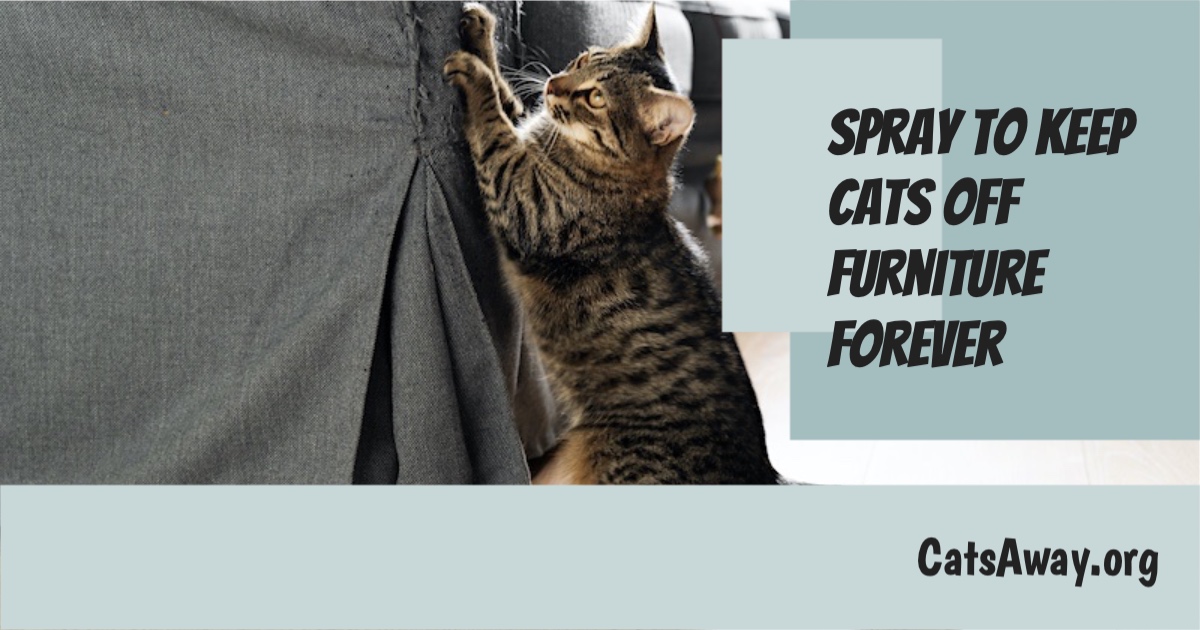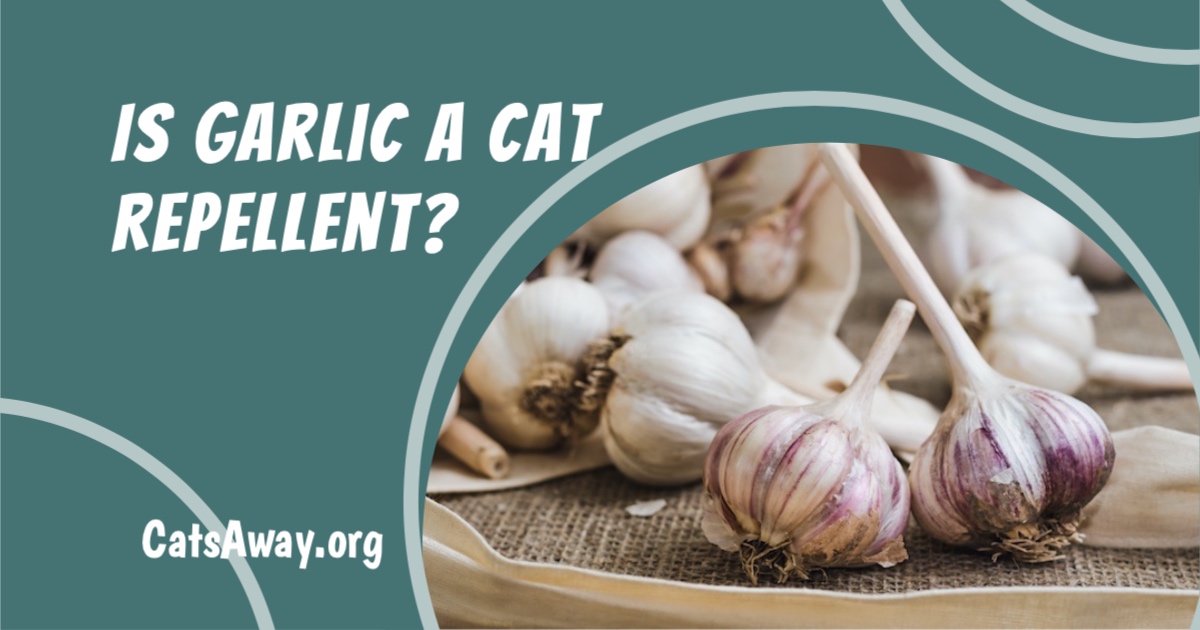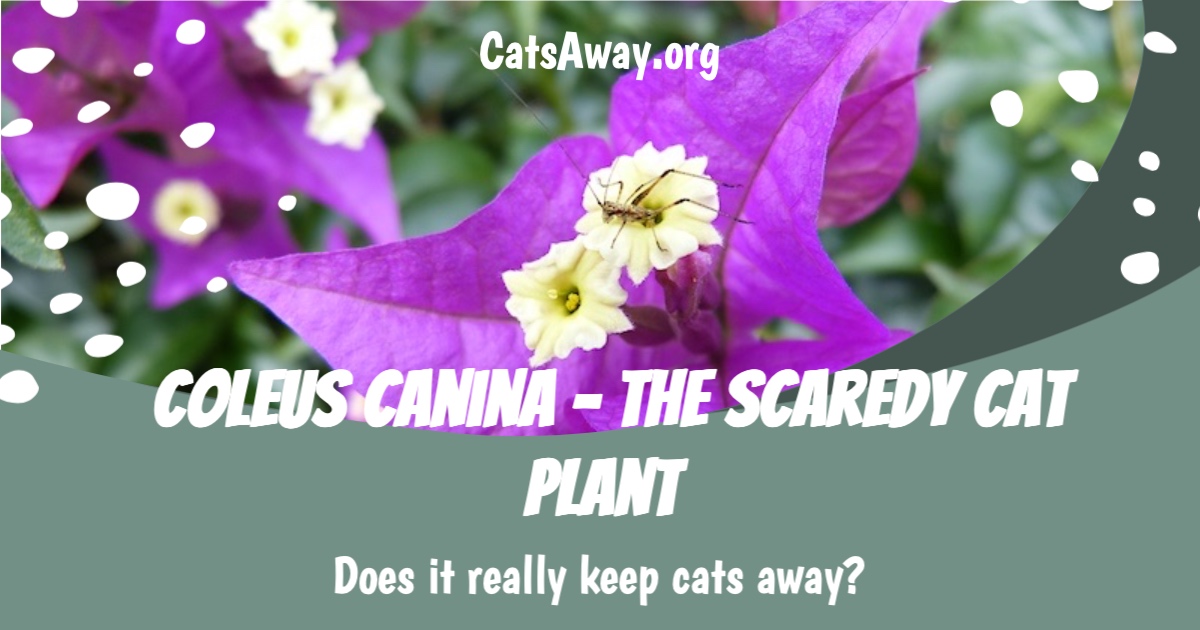Do you have a problem with cats coming into your garden and ruining all of the hard work you’ve put in? Using plants to deter cats from your yard can help keep unwanted neighbourhood cats out while keeping your beloved indoor cat happy and healthy at home.
From Geranium to Lemon Balm, we’ll discuss some of the best cat deterrent plants that will help keep those pesky felines stay away from your garden without any harm done to them or other animals.
Curry Herb Plant
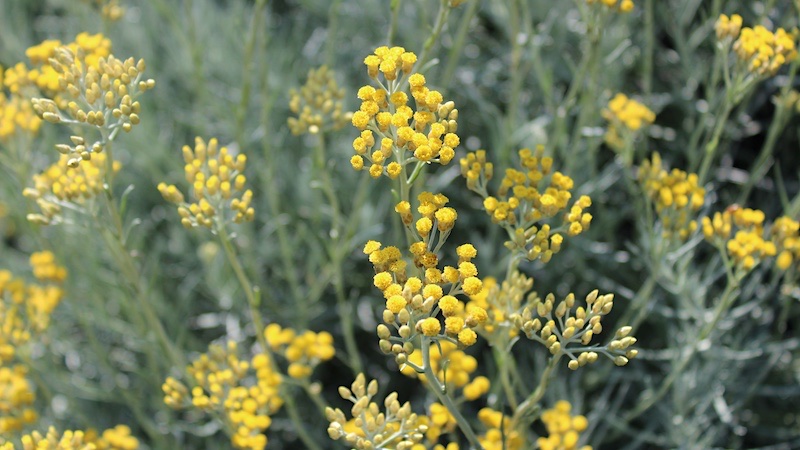
This is a perennial shrub that grows up to 3 feet tall and has fragrant, yellow-green leaves. It produces small white flowers in the summer and has a strong curry scent that cats find unpleasant. The plant is easy to care for and can be grown in containers or in the ground.
Benefits: Growing curry herb plants around your garden will help keep neighbourhood cats away without using harsh chemicals. The strong smell of the plant’s leaves will deter cats from entering your garden while still providing you with an attractive addition to your landscape design.
Additionally, this herb can also be used as a culinary ingredient for adding flavor to dishes such as curries, soups, stews, salads and more.
To ensure healthy growth of curry herbs, it should be planted in well-draining soil with plenty of sunlight exposure each day. Water regularly but do not over water as this may cause root rot or other diseases which could kill the plant.
Fertilize once every few months during spring and summertime when it is actively growing for best results. Prune back any dead branches or stems during winter time so new growth can occur come springtime again.
Lemon Thyme
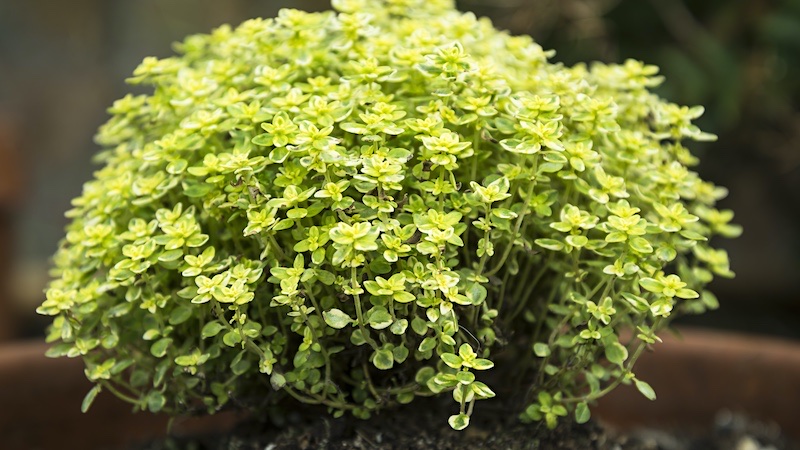
This is an evergreen herb with small, lemon-scented leaves and tiny pink flowers. It grows best in a sunny spot with well-drained soil, and can be used as a ground cover or planted in containers. The strong lemon scent of this plant deters cats from entering your garden, making it an ideal choice for keeping cats away from your plants.
Benefits: Beyond its ability to keep cats out of the garden it also has other benefits. Its leaves are edible and can be used to flavor dishes such as soups, stews, salads, fish dishes and more.
Additionally, it has antiseptic properties that make it useful for treating minor cuts and scrapes when applied topically as a poultice or ointment.
When growing lemon thyme indoors or outdoors, provide plenty of sunlight (at least 6 hours per day) and water regularly but do not over water; allow the soil to dry out between watering sessions.
Prune back any dead or dying stems after flowering season ends to encourage new growth in the springtime. If planting outdoors in colder climates where temperatures drop below freezing during winter months, mulch around the base of the plant to protect its roots from frost damage
Lemon Balm

This plant has natural insect repellent qualities that may also repel cats from the area where it’s planted. It produces citronella, which is known to be an unpleasant scent for cats.
While there have been no formal studies done on how lemon balm affects cats, anecdotal evidence suggests this herb may offer some help when trying to keep unwanted visitors away from your home or garden.
Scaredy Cat Plant
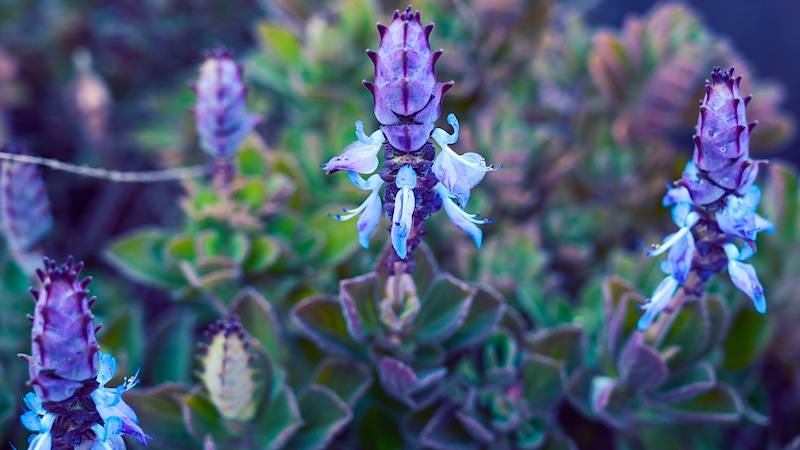
Scaredy Cat Plant (coleus canina) is a low-growing perennial with small, heart-shaped leaves and white flowers that bloom in the summer months. It was developed specifically as a cat repellent by a gardener in Germany.
This plant emits an odor that cats find unpleasant, making it an effective deterrent for keeping cats out of your garden without using harsh chemicals or repellents. It prefers full sun and well-drained soil, and can be grown in containers or directly in the ground.
Benefits: The main benefit of growing scaredy cat plants is to keep cats away from your garden without resorting to harsh chemicals or repellents. The smell emitted by this plant is said to deter most cats from entering your yard, but won’t harm them if they do come close enough to sniff it.
The Scaredy Cat Plant should be planted in full sun locations in soil that is well drained. They can also be grown in containers as long as they have adequate drainage holes at the bottom of the pot.
Water regularly during their first season until they become established, then reduce watering frequency thereafter; too much water can cause root rot which could kill the plant over time.
Fertilize lightly every few weeks during their active growth period (spring/summer) with a balanced fertilizer such as 10-10-10 or 20-20-20 ratio fertilizer blend specifically designed for flowering plants like this one.
Lavender

Lavender is a fragrant herb with purple flowers that blooms throughout the summer months. It has a strong, sweet scent and its leaves are gray-green in color. The plant can reach up to three feet tall and wide, making it an attractive addition to any garden or outdoor space.
Benefits: Lavender’s strong scent deters cats from entering your garden, making it an ideal choice for keeping them away from your plants without using harsh chemicals or repellents. In addition to being a natural cat deterrent, lavender also attracts beneficial insects such as bees and butterflies which help pollinate your plants. Its pleasant aroma also makes it great for use in aromatherapy or potpourri blends.
Care Instructions: Lavender prefers full sun and well-drained soil, so be sure to choose a spot in your yard that gets plenty of sunlight and isn’t prone to standing water after rainstorms. If you’re planting directly into the ground, dig a hole twice as deep as the root ball of the plant before placing it inside and backfilling with soil around it.
Water regularly until established then reduce watering frequency but make sure not to let the soil dry out completely between waterings. Prune back dead stems during late winter or early spring if needed for shape control or size reduction.
Note that the ASPCA class Lavender as toxic to cats and dogs and ingestion could lead to vomiting.
Rosemary

Rosemary is an evergreen shrub with needle-like leaves that have a strong aroma when crushed between fingers. It has small, pale blue flowers and grows to about 3 feet tall. The leaves are dark green in color and can be used fresh or dried for cooking purposes.
Benefits: The pungent smell of Rosemary deters cats from entering your garden, making it an effective deterrent for keeping them away from your plants without using harsh chemicals or repellents.
Its aromatic scent also adds flavor to food dishes, as well as being beneficial for medicinal uses such as treating headaches and indigestion. Additionally, rosemary helps attract pollinators like bees and butterflies which will help increase the yield of other plants in your garden.
For container gardening, use potting mix specifically designed for herbs like rosemary which contains slow release fertilizers already mixed into it. This will help ensure proper nutrition all season long.
Ruta Graveolens

Another plant that works particularly well at repelling cats is Rue, also known as common Rue and herb of grace or to give the plant it’s proper name Ruta Graveolens. Rue can grow to up to 70cm (about 2.5ft) tall and wide and has a powerful odour.
It is a semi woody perennial with a nice grey green colour with yellow flowers. Or try the Jackman’s Blue variety for a metallic blue-green colour.
It is a native of the Balkan Peninsula and was introduced to Britain by the ancient Romans. It was originally grown for its herbal qualities and used for a variety of medicinal purposes.
It is hardy and likes full sun and can grow in hot dry climates and in poor soils. It will be happy enough in part sun spots but may produce a different colour foliage. For my North American readers I’m told it’s fine in Zones 4 to 9.
Rue will repel cats from its vicinity but you can also collect and spread dried Rue leaves on your beds and in your pots.
Geraniums
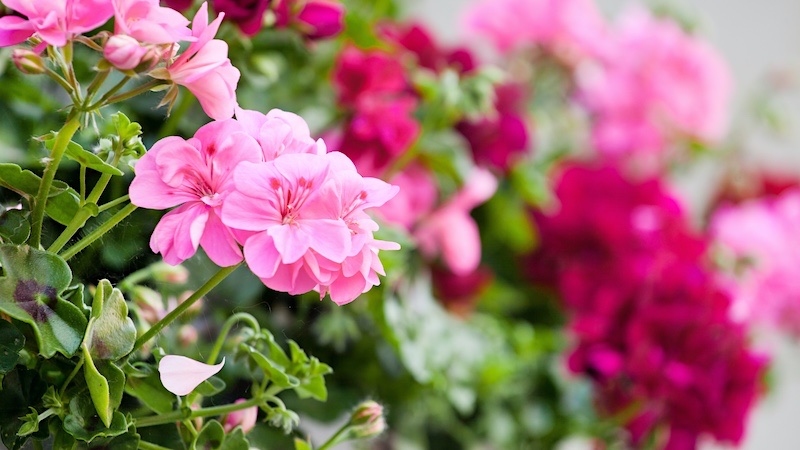
Geraniums have been used as a home remedy to deter cats from gardens and other outdoor spaces for centuries. These flowering plants, known for their vibrant foliage and sweet scent, have long been thought to naturally repel cats due to their strong aroma.
The history of using geraniums as a cat deterrent dates back to the Ancient Egyptians who believed that the aromatic oils found in these flowers had magical powers that could keep cats away.
Benefits: First and foremost, geraniums are an effective deterrent against cats. Cats dislike the scent and will avoid areas with geranium plants. Additionally, these flowers thrive in sunny spots and require minimal care – making them perfect for busy pet owners.
Geraniums come in a variety of colors – from deep red to vibrant pinks – so you can create a beautiful landscape while keeping cats away from your outdoor space. They are one of the prettiest plants to deter cats with which makes them a popular option.
Hawthorn and other Prickly Bushes
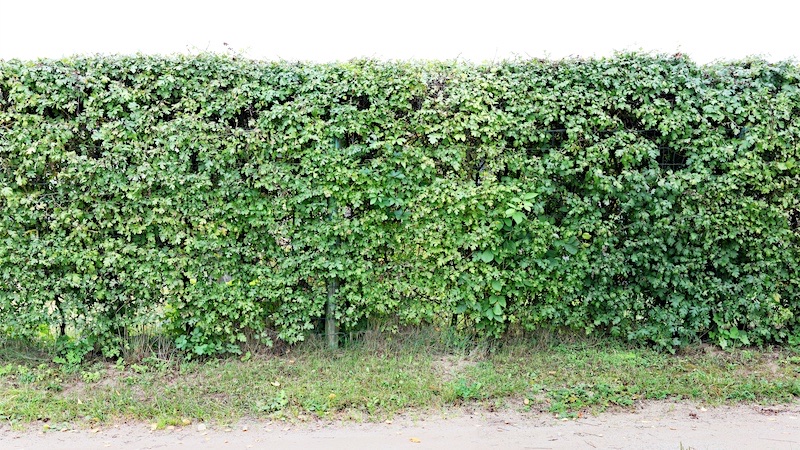
Some of the best cat repellent plants are prickly. Some of these will deter cats, dogs and even human intruders from your home if strategically placed around your garden.
The downside is that by their prickly nature they can be difficult to look after and you will want to think carefully if you have toddlers regularly in the garden.
Suitable prickly plants include:
Hawthorn – can be pruned into an hedge that the SAS would find practically impenetrable
Holly – Planted close together it creates a formidable barrier
Berberis – Plenty of varieties that come in various sizes and all have prickles
Blackthorn – Really nasty spikes guaranteed to keep cats and most other animals out
Blackberry – Plenty of thorns to keep all animals at bay with the added bonus of producing berries
Unlike the Curry plant, Lemon Balm and Coleus Canina, thorn bushes cannot be simply jumped over. They can though, like all these plants be walked around so you need to do some planning before planting.
FAQs in Relation to Plants to Deter Cats
What other cat deterrent plants could I try?
Other garden plants include Pennyroyal and Oregano, both of which can help to repel cats.
How do I keep stray cats out of my garden?
1. For instant results install a motion-activated sprinkler system to startle cats away from your garden when they approach.
2. Plant cat repellent plants such as lavender, rue, and pennyroyal around the perimeter of your garden to discourage cats from entering.
3. Lay chicken wire or plastic netting over any vulnerable areas in your garden that cats may try to access. Cats hate walking on chicken wire.
4. Set up an outdoor enclosure for your own pet cat so it can enjoy time outside without wandering into other people’s gardens or yards.
5. You could also try spreading coffee grounds, citrus peels or cayenne pepper, all of which have shown to repel cats although success varies dependent on the cat. Just spread throughout your flower beds to try it out.
6. Keep food scraps and garbage securely stored away so that neighbourhood cats are not attracted by the smell of food waste in your yard or garden area.
What is the most effective cat repellent?
The most effective cat repellent is a combination of physical barriers, such as fences or netting, water and scent-based deterrents. Physical barriers can be used to keep cats out of gardens or yards by blocking their access. Scent-based deterrents use strong smells that cats find unpleasant and will avoid.
Commonly used scents include citrus, lavender, peppermint oil, and vinegar. Additionally, a motion activated sprinkler can startle cats away from the area when they approach it. All these methods combined should provide an effective way to keep neighbourhood cats out of your garden.
What house plants do cats hate?
Houseplants with sharp leaves or spines will act as a deterrent for cats who may try to climb them or chew on them. Examples of these include cacti and succulents like aloe vera or agave.
Rosemary is probably the best house plant to keep cats out of a particular room as it produces a pleasant sweet smell that cats don’t like. It grows both indoor and outdoor and is a useful herb that can be used in cooking.
Conclusion
Some plants attract cats, other plants repel cats.
Curry herb plant, lemon thyme, scaredy cat plant, lavender, rosemary, lemon balm, common rue citronella, geraniums and lemon grass are all plants that repel cats with varying success.
A variety of cat repellent plants placed in strategic locations around your garden can be an effective way to discourage cats from entering the area. With some planning and care you can have a beautiful garden that is free of unwanted feline visitors.
Are you tired of neighbourhood cats taking over your garden and need instant results?
I’ve spent $100’s buying and testing products designed to keep neighborhood cats out of my garden and you can read all my results here.



